
Spring bulbs: 6 ideas for pairing them
in soft or vibrant scenes
Contents
The spring bulbs herald the return of fine weather and promise a burst of colour in the garden! Classic daffodils and early or late tulips allow for the creation of soft or vibrant scenes, and you can have fun combining them with many other bulbs in the garden or on the terrace, as they all delight us at the end of winter: anemones, squills, Chionodoxas, fritillaries… right through to the late spring Alliums.
Here are some bucolic or more sophisticated scenes for very contemporary atmospheres that we invite you to discover.
In a bucolic meadow
Planted in masses in the lawn, spring bulbs lend themselves beautifully to colourful pastoral scenes in sunny areas of large gardens that are not yet mown, such as around an orchard. For this bucolic use, large swathes of daffodils can be created, which will shine for two to three weeks, but a simple combination is equally welcome, marrying the whiteness of Narcissus ‘Thalia’ with the pink or orange of tulips.
Choose bulbs that naturalise, such as botanical tulips (Tulipa fosteriana ‘Zombie’,Tulipa clusiana ‘Lady Jane’), to see the colourful patch expand over time. Plant in large quantities, as the flowers of these tulips are smaller. You can incorporate a second colour close to the first, this time with slightly taller and more stately tulips to make them stand out, and with single flowers to maintain the natural spirit of the place: in pink, for example, with ‘Darwin Ollioules’ or the Triumph tulip ‘Barcelona’. A few pink campanulate scillas will beautifully complete this bucolic setting.
→ Read also: Planting bulbs in masses, why and how?
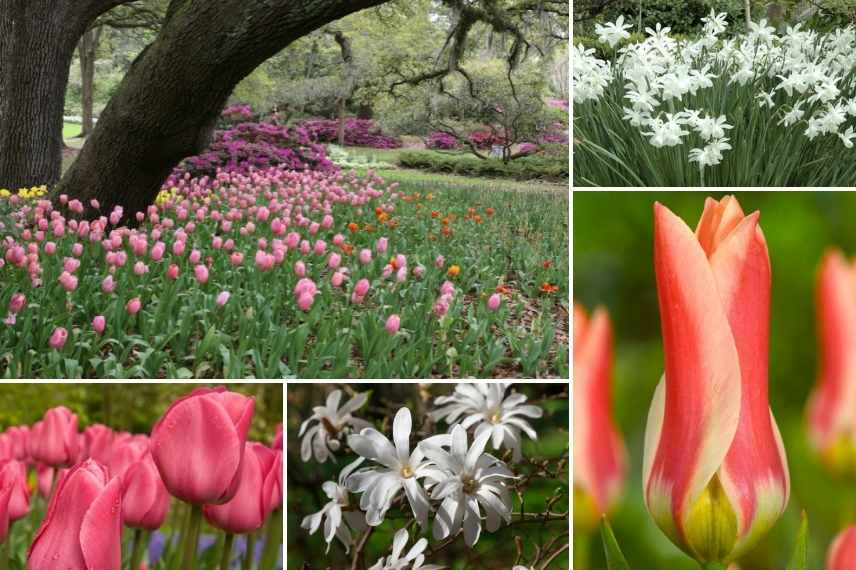
Planted in masses in a large garden under trees, Narcissus ‘Thalia’, Triumph tulips ‘Barcelona’, and botanical tulips ‘Zombie’ will also look beautiful alongside white blooms such as Magnolia stellata.
In a bed of warm tones
Accompany a bushy bed in partial shade or full sun with the orangey and chocolatey purple tones of spring bulbs! These warm colours will create a scene that is both vibrant and very subtle by adding a few apricot or very pale yellow touches.
For this type of hue, an orange-flowering spring bush will serve as the spearhead, such as a Chaenomeles speciosa ‘Friesdorfer’, or a Edgeworthia chrysantha ‘Red Dragon’. The intense orange of Imperial Fritillaries is magical when paired with the violet of Iris germanica ‘Cat’s Eye’ blooming at the same time, these two bulbous plants providing beautiful height for one and a border effect for the other. A purple heuchera ‘Plum Royale’ and the Fritillaria persica with its deep brown-purple flowers will support the purple tones of the scene. With a few light daffodils like ‘Spring Sunshine’, you will sufficiently brighten the bed. An Euphorbia griffithii and Asian buttercups will extend the orangey sensation from May onwards.
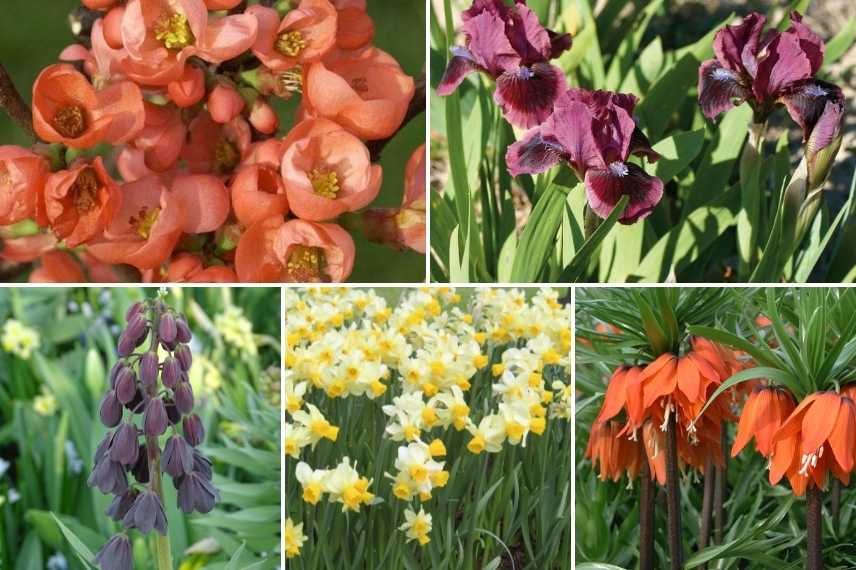
Chaenomeles speciosa ‘Friesdorfer’, Iris germanica ‘Cat’s Eye’, Fritillaria persica, daffodils ‘Spring Sunshine’, Imperial Fritillaries
Discover other Spring bulbs
View all →Available in 1 sizes
Available in 1 sizes
Available in 1 sizes
Available in 1 sizes
Available in 1 sizes
Available in 1 sizes
Available in 1 sizes
Available in 1 sizes
Available in 1 sizes
Available in 1 sizes
In pots on the balcony or terrace
We love to see the bulbous pots we prepared in autumn come into bloom: beautifully showcased in lovely containers on the terrace or balcony, they are a charming ode to spring.
For a romantic terrace or balcony, opt for a palette of pink from March: the flowering of double tulips ‘Colombus’, with bright peony-pink flowers edged in cream, will be softened by some late double tulips ‘Angelique’ that will bloom at the same time and continue until May. You can then enjoy over a month of pink flowering. Just add a few ‘Constant Cheer’ wallflowers to this composition for a longer flowering period (up to June) and a very harmonious blend of salmon and purple tones around these two tulips. In a slightly longer planter, lavender-coloured pansies like ‘Matrix Lavender Shades’ further enhance the charm.

Double tulip ‘Angelique’, Double tulip ‘Colombus’, Erysimum ‘Constant Cheer’, Pansy ‘Matrix Lavender Shades’
Another style of pot that is more minimalist but visually spectacular: the energising orange of the crown of a imperial fritillary paired with the deep blue of muscari. These two complementary colours enliven any terrace, and the architectural contrast between the upright, sturdy stems of the orange imperial fritillary and the blue border of the tiny bells of the muscari is a delight. This combination is a must-have for an exotic terrace, in a glazed blue pot!
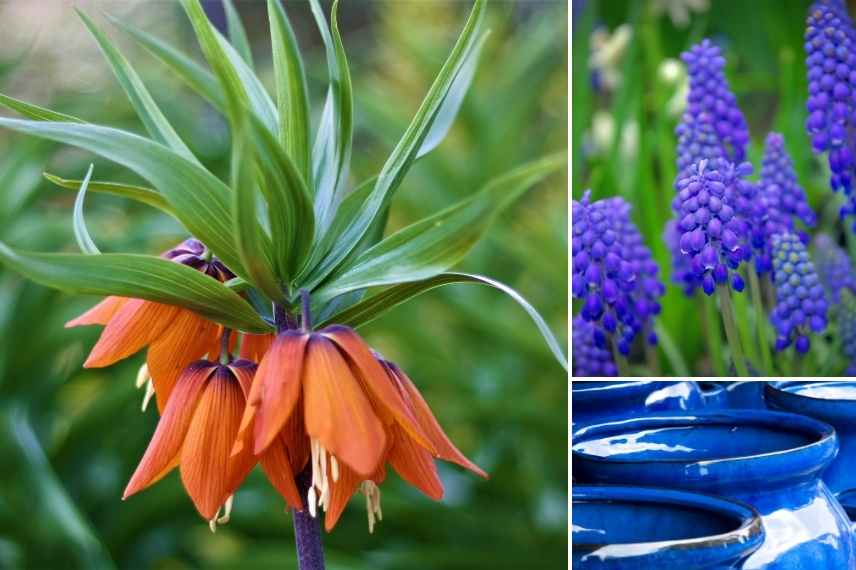
Imperial fritillary and Muscari
White and blue association
White and blue flowerings are easy to achieve in the garden in spring, given the variety of bulb flowers available in these colours. This combination brings a lot of freshness to the garden and benefits from being accompanied by zesty foliage to add even more vibrancy.
Pair some less common bulbs like the Scilla mischtschenkoana ‘Tubergeniana’, a stunning gem with its white flowers veined with a deep blue appearing as early as February, and the original lily-flowering tulip ‘Green Dance’ in cream, which will bloom later from April. Surround them with deep blue flowering bulbs that will bloom in succession: a clump of Chionodoxas forbesii ‘Blue Giant’ from February, hyacinths ‘Rembrandt’ in violet-blue from March, muscari ‘Big Smile’ and the stunning Scilla peruviana in April, some anemones from Caen to ensure the blue tones of the bed in May and June. A beautiful euphorbia characias in chartreuse green planted alongside will beautifully warm these blue shades.

Euphorbia characias, Muscari ‘Big Smile’, Scilla mischtschenkoana ‘Tubergeniana’, Tulips ‘Green Dance’, Anemones from Caen, and Hyacinths ‘Rembrandt’
In a sunny rockery
Some low botanical tulips are perfect for integrating into sunny rockeries. They refresh the spirit of these small stony areas by brightening them with their warm hues in the early months of the year. For example, combine two or three types of inflorescences and colours: Tulipa turkestanica with pure white and a yellow centre, Tulipa orphanidea ‘Flava’ with pointed lemon-yellow and orange petals, and Tulipa tarda, very small but radiating with its bright yellow star-shaped flowers. These three tulips create a lovely delicately flowered setting between March and April. Complete with a few Crocus angustifolius that will bloom in early February, while a carpet of Arabis caucasica ‘Variegata’ will produce a beautiful long-flowering white cousin with cream-variegated foliage. Greyish notes will shine in the sun with two or three clumps of low fescues like Festuca valesiaca ‘Glaucantha’, while a Convolvulus cneorum can weave in beside them for a staggered flowering starting in May.

A trio of tulips: Tulipa turkestanica, Tulipa orphanidea ‘Flava’ and Tulipa tarda. Accompanied below by Crocus angustifolius, an Arabis caucasica ‘Variegata’, the grey of a Festuca valesiaca ‘Glaucantha’ and Convolvulus cneorum
In a graphic bed heading for summer
Among the latest spring bulbs are Allium or ornamental garlic, with inflorescences in more or less large balls, and Eremurus, also known as the Foxtail Lily, showcasing its tall, spectacular flower spikes. What if you combine the two for a bold graphic effect in a sunny border? The result is magical in an English garden with soft hues or in a contemporary garden with a more striking contrast.
With Eremurus robustus, the delicately pink spikes reach an impressive height of about 2 m, allowing them to be paired with the smaller mauve Alliums christophii: these Alliums present their large, graceful starry spheres, with both plants blooming together in May.
To elegantly accompany this scene, a bush with a rounded habit, such as a cushion of Shrubby Veronica, a neatly trimmed boxwood, or a Pittosporum tenuifolium ‘Golf Ball’ will be perfect alongside them: they will bring a contrasting structure. You can also dare to bring an ornamental thistle closer, Cynara cardunculus, with its sculptural silver leaves, or alternatively play with the ultra-graceful foliage, like lace, of a Muehlenbeckia.

Alliums christophii, Pittosporum tenuifolium ‘Golf Ball’, Muehlenbeckia, Cynara cardunculus, and Eremurus robustus
- Subscribe!
- Contents
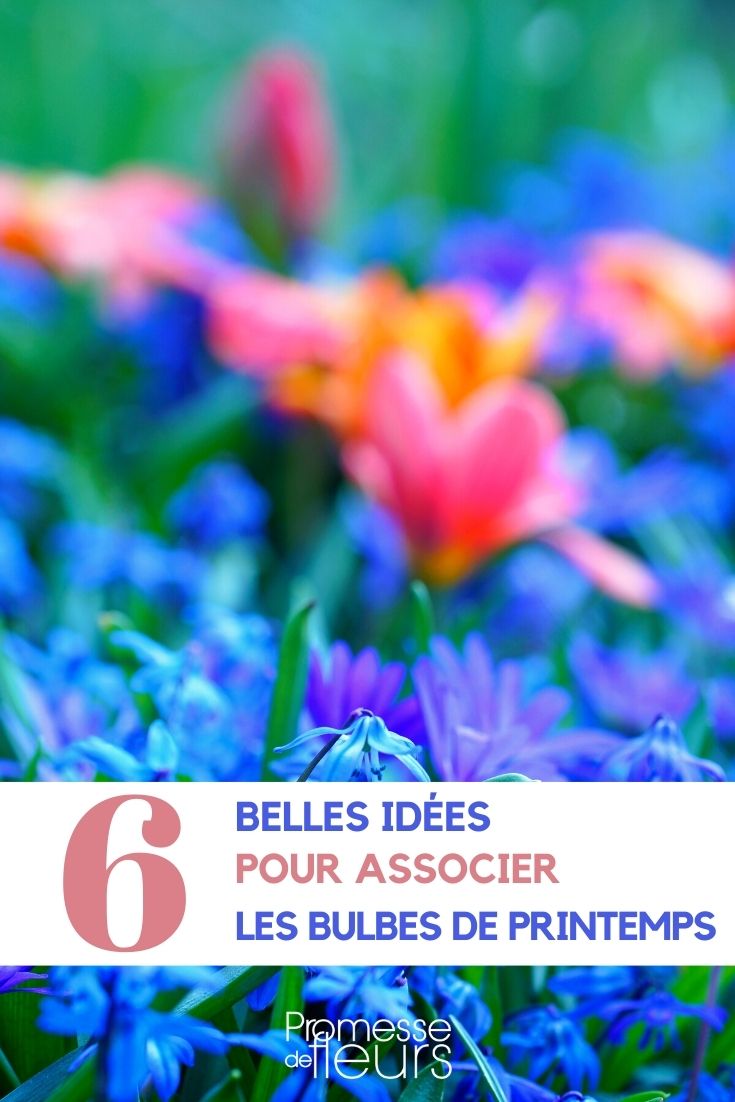
































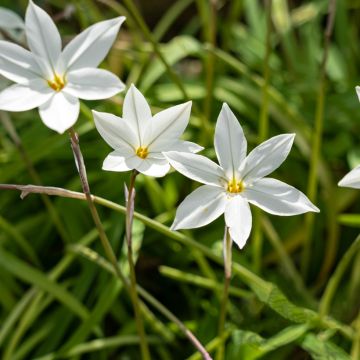


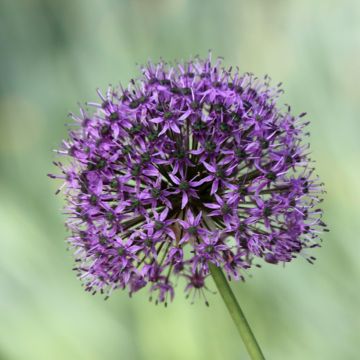

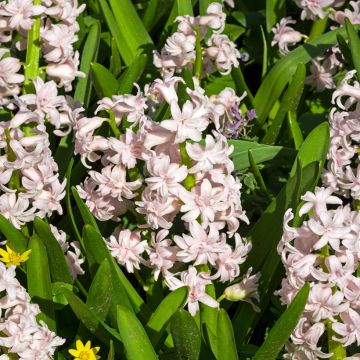
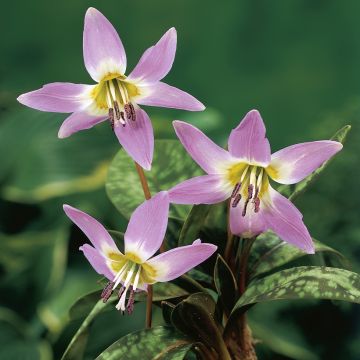
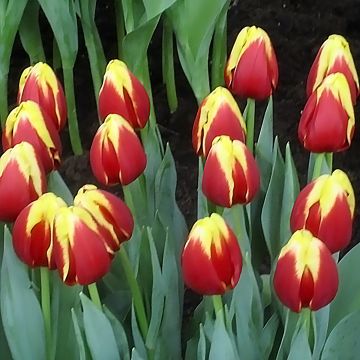
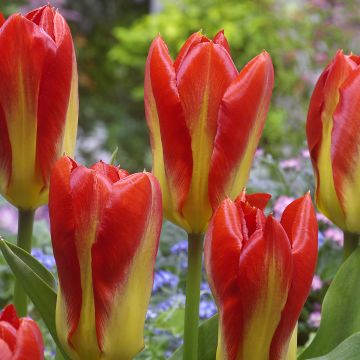
Comments